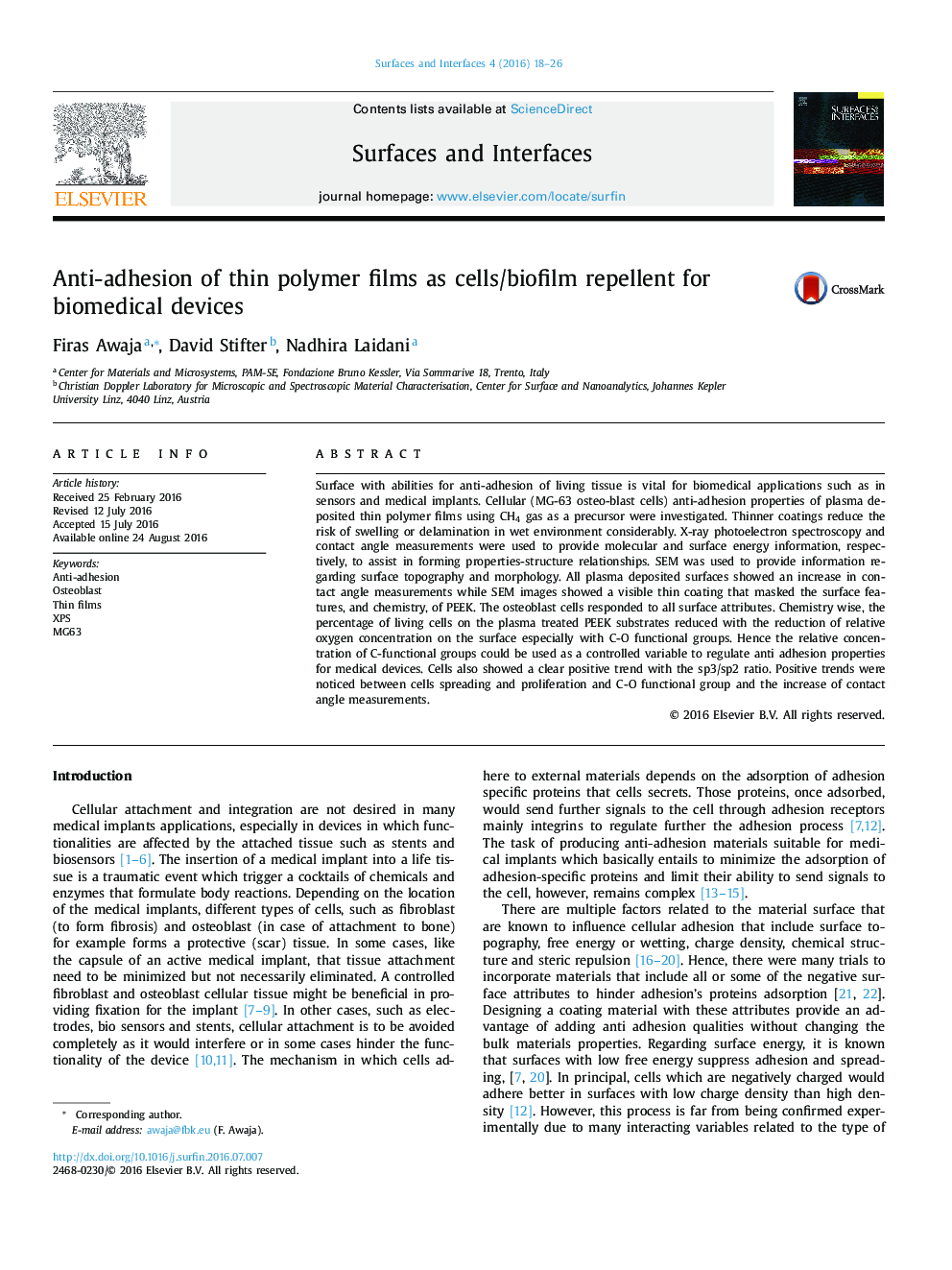| Article ID | Journal | Published Year | Pages | File Type |
|---|---|---|---|---|
| 4985699 | Surfaces and Interfaces | 2016 | 9 Pages |
Abstract
Surface with abilities for anti-adhesion of living tissue is vital for biomedical applications such as in sensors and medical implants. Cellular (MG-63 osteo-blast cells) anti-adhesion properties of plasma deposited thin polymer films using CH4 gas as a precursor were investigated. Thinner coatings reduce the risk of swelling or delamination in wet environment considerably. X-ray photoelectron spectroscopy and contact angle measurements were used to provide molecular and surface energy information, respectively, to assist in forming properties-structure relationships. SEM was used to provide information regarding surface topography and morphology. All plasma deposited surfaces showed an increase in contact angle measurements while SEM images showed a visible thin coating that masked the surface features, and chemistry, of PEEK. The osteoblast cells responded to all surface attributes. Chemistry wise, the percentage of living cells on the plasma treated PEEK substrates reduced with the reduction of relative oxygen concentration on the surface especially with C-O functional groups. Hence the relative concentration of C-functional groups could be used as a controlled variable to regulate anti adhesion properties for medical devices. Cells also showed a clear positive trend with the sp3/sp2 ratio. Positive trends were noticed between cells spreading and proliferation and C-O functional group and the increase of contact angle measurements.
Related Topics
Physical Sciences and Engineering
Chemical Engineering
Colloid and Surface Chemistry
Authors
Firas Awaja, David Stifter, Nadhira Laidani,
